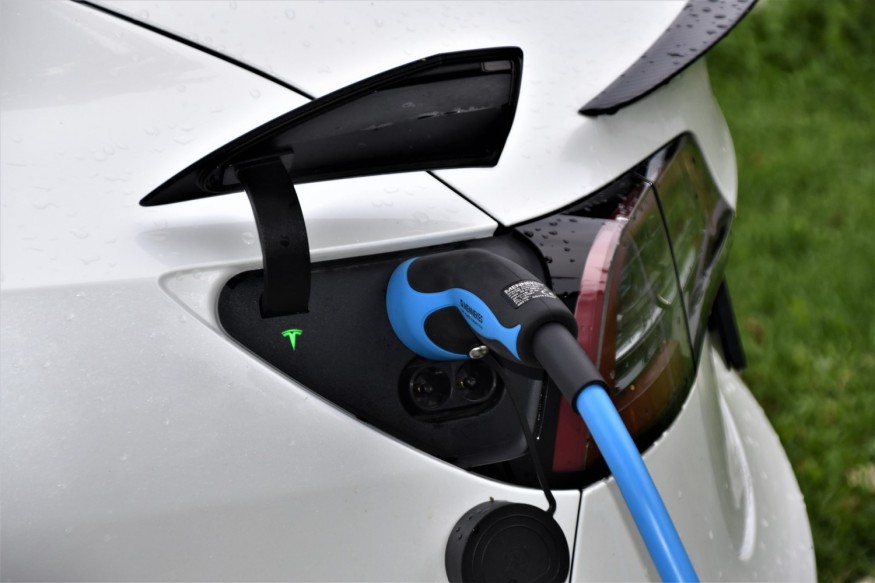Electric vehicles are still a young technology. Their gasoline and diesel-powered counterparts have had almost a century to iron out the wrinkles, and you have to agree, they've grown relatively good at it. They're silky, strong, and durable.

You might argue that the internal combustion engine is nearly ideal if it weren't for all the crap that spews out of their tailpipes - plus all the other pollutants related to drilling for oil, shipping it, refining it, and then distributing it to gas stations.
Charging Faster

Electric automobiles that go longer and charge faster undergo the same process of continual improvement and refining. The goal is to be as efficient as possible. Better aerodynamics, improved battery technology, motors, inverters, and other components contribute to this. Here is a report on two of those advancements that promise better electric automobiles in the years to come. Both are Tier One automotive suppliers, organizations that we seldom hear about yet provide most of the components that go into the automobiles we drive.
E-Vehicle Symposium
The 35th International Electric Vehicle Symposium is being held in Oslo, Norway, this week. Vitesco Technologies, a spin-off of Continental, one of the largest Tier One suppliers, is one of the firms participating in the exhibition. "Oslo is the meeting spot for all the big names in automotive electrification," says Thomas Stierle, Vitesco's head of electrification technologies and electronic controls. We'll showcase highlights from our existing portfolio and advancements for electromobility's future requirements - especially efficient electric driving."
A longer range implies higher efficiency, which every EV motorist will enjoy. However, EESM motors have another big advantage. They are less expensive to produce since they do not require rear earth components, which have recently increased in price. PSM motor prices have reached their greatest point in the last decade. That might explain why BMW's 5th generation electric automobiles, such as the iX3, i4, iX, i7, and iX1, use EESMs.
Getting More Efficient

Vitesco will also be exhibiting its systems and solutions for more efficient electric cars in Oslo this week, according to Electrive, including battery management systems, power electronics, and thermal management controls. "We focus on global, scalable platforms for electric cars with our portfolio." "This is where we see the future development and the possibility for sustainable and more CO2-neutral mobility," Stierly adds.
Another Tier One supplier, Schaeffler, showcased a range of electric drive solutions in Oslo this week, including its new 4-in-1 drive axle for electric automobiles. The 4-in-1 system includes thermal management and the electric motor, power electronics, and transmission components, commonly combined into one component.
The manufacturer claims that integration reduces weight and space, but the heat management system is incredibly efficient. For electric automobiles, this implies increased range and faster charging. According to Electrive, the new integrated drive axle will lower energy usage by up to 14 percent. A new CO2 heat pump contributes to the efficiency, partly owing to greater waste heat usage. Furthermore, the new modules are around 10% less expensive than present drive axles.
Because electric drivetrains do not have access to a lot of waste heat from a combustion engine, thermal management is critical. According to Shaeffler, heat in electric automobiles is a "rare and expensive commodity." Warming the passenger compartment and preconditioning the battery for quick charging are both required. Electric cars must create heat with energy from the battery because waste heat is scarce.
Due to the removal of unneeded hoses and wires, less energy is wasted in the form of heat. "The 4 in 1 system's biggest benefit, aside from its compact design, is the optimum interplay of the multiple subsystems," adds Schröder. During development, engineers considered both the thermal behavior of individual drive components, such as the electric motor and power electronics, as well as the most efficient and comprehensive thermal management of the entire vehicle to use waste heat from the electric motor and power electronics to heat the interior rather than dissipate it through a radiator.
Consistently Improving
Efficiency was never a major concern for gasoline and diesel automobiles, but it is the most critical aspect for electric vehicles, and it's easy to see why. The energy content of a gallon of gasoline is 33.7 kWh. To put it another way, a car with a 67 kWh battery must be able to operate on the energy contained in only 2 gallons of gasoline. It's no surprise that electric vehicles must improve their efficiency.
We tend to focus on new battery technology and quicker chargers, which are vital, but figuring out how to make electric cars drive longer on a kWh of power is also crucial. Electric automobiles, like internal combustion engines, will improve with time. Hundreds, if not thousands, of firms are working on improving EV efficiency. It won't be long until cars with 400 miles of range become commonplace, and the EV revolution will truly accelerate.
For more news about making the environment sustainable, don't forget to follow Nature World News!
© 2025 NatureWorldNews.com All rights reserved. Do not reproduce without permission.





